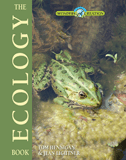
Low-Octane Tanks of the African Plain
Creation on Display
One reason rhinos rule the African plain has nothing to do with their horns or size. They’ve made a contract with unseen technicians who convert local rubbish into high-grade fuel.
Will the unicorn be willing to serve you, or abide by your crib? Can you bind the unicorn?” (Job 39:10–12, KJV updated).
Unicorns in the Bible—is that even possible? Well, if you picture prancing, pointy-horned ponies romping in the roses, definitely not. However, you might be surprised to learn that a modern living animal is a much better fit for the powerful, savage beast described in the book of Job—the rhinoceros.
As adults, these thick-skinned brutes don’t have any natural enemies. You might think it’s their horns that keep lions at bay, but in reality it’s their sheer size, speed, and nasty bite. The white rhinoceros is the third-biggest land mammal, weighing in at a hefty 4000–6000 pounds (1800–2700 kg)!
But the secret to rhinos’ success is not so much their strength and ferocity or pointed nose. Oddly, this formidable tank runs on low-quality fuel that many other plant-eaters can’t eat. It depends on some of God’s smallest creatures to survive on this low-carb veggie diet.
First, a Word About That Nose
But first, a quick word about that big horn, since you’re probably wondering. The rhino horn is made of a dense material called keratin (the same material in your hair and fingernails). But technically it’s not a true “horn.” Unlike true horns on cattle or antelopes, the rhinoceros “horn” does not have a bone core and is not attached to the skull.
Most animals’ horns come in pairs, and three species of rhinos have two horns aligned front-to-back down the snout. Rhinos use these horns primarily in contests over mates and territory, like the creatures identified in Job 39.
We Need Each Other
Rhinos are herbivores and are well designed to eat plants many animals can’t eat. A big part of that design is the rhino’s crucial relationship with a tiny life-giver—bacteria. Were it not for the Creator’s system of integrated and cooperative microbes and organs, the rhino could not exist. Since God is a relational God (Luke 3:21–22; John 3:16), we should expect to see such mutually beneficial relationships everywhere in His creation. And guess what—we do!
Everyone Benefits
By itself, the rhino can’t access essential nutrients in plants. The problem is that plant cells have resilient walls made of a very tough molecule called cellulose. Rhinos simply don’t have the tools to break it down, but bacteria do, an enzyme called cellulase.
So they work together. Rhinos provide a place for bacteria to live. In fact, they supply two homes. One, the caecum, is located just after the small intestine. Bacteria also live in the colon—the last stop in the digestive system.
Many microbes make themselves at home in the caecum, where the rhinoceros supplies them with plenty of food.
The bacteria pay the rent by providing nourishment. As bacteria process cellulose, they make important nutrients such as sugars, B vitamins, and essential amino acids not easily obtained from the plants. Bacteria then live off these nutrients.
The rhino will later absorb the nutrients by digesting the bacteria. But there’s a problem: rhinos digest and absorb nutrients in the small intestine. How can the nutrients get from the caecum back into the small intestine—especially since powerful muscular contractions, called peristalsis, drive the food out of the small intestine into the caecum in the first place?
At first glance it seems the rhino can’t benefit from the nutrients the bacteria have manufactured. They’re headed straight to the colon for elimination. What a waste!
Well, all is not as it seems. Peristaltic movements seem to be reversible. Apparently, reverse peristalsis transports dead bacteria and nutrients back into the small intestine, where they can be digested and absorbed.
This relationship with bacteria allows rhinos to consume low-quality food faster and extract more nutrients than other herbivores, such as deer, can. As a result, rhinos thrive in habitats with poor-quality foods—such as arid environments with few plants, many of which are poisonous—where grasseaters and other herbivores would struggle.
Black rhinos actually feed on plants most herbivores won’t even taste. They eat huge amounts of toxic plants. Their unique digestive systems—aided by caecal microbes—remove the plants’ poison.
This marvelous system is a good example of very different organisms working together as one. Even the mighty rhinoceros depends on lowly bacteria for its survival. Its horns and thick hide may make for a great show, but the important work takes place in its gut.

Fuse | Thinkstockphotos.com
Their relationship with bacteria allows rhinos to consume low-quality food and extract more nutrients than other herbivores.
Did You Know . . .
- All rhinos except the white rhino have prehensile lips that can grab vegetation like tiny fingers.
- Asian rhinos have tusks, and males use them for fighting other males. African rhinos do not have tusks and use their horns instead.
- Rhino horns are a prized ingredient in Asian folk medicines, although they have no real medicinal value.
- Rhinos are among the most endangered mammal species in the world because poachers kill them for their horns and because humans are destroying their habitat.
- The chemical composition of rhinoceros horns is directly linked to their diet, so it can be used to identify where poachers acquired a particular horn.
- Rhinos may communicate using sounds below the level of human hearing (infrasonic), just like giraffes and elephants do.
- Rhinos give birth every two years and carry their young for 420–570 days, nearly double the time human mothers carry their babies (280 days).
- The white rhino can reach speeds up to 27 miles per hour (45 km/hr)—enough to knock over an SUV filled with gawking tourists!
Class: Mammalia
Order: Perissodactyla (“uneven
toed”)
Family: Rhinocerotidae
Habitat: Grasslands, savannahs,
and lowland forests in Africa
and Asia.
Answers Magazine
October–December 2015
Learn what the Bible really teaches about caring for the environment and read the shocking results of a survey showing what the twentysomethings in your church believe.
Browse Issue SubscribeRecommended Resources

Answers in Genesis is an apologetics ministry, dedicated to helping Christians defend their faith and proclaim the good news of Jesus Christ.
- Customer Service 800.778.3390
- © 2024 Answers in Genesis



